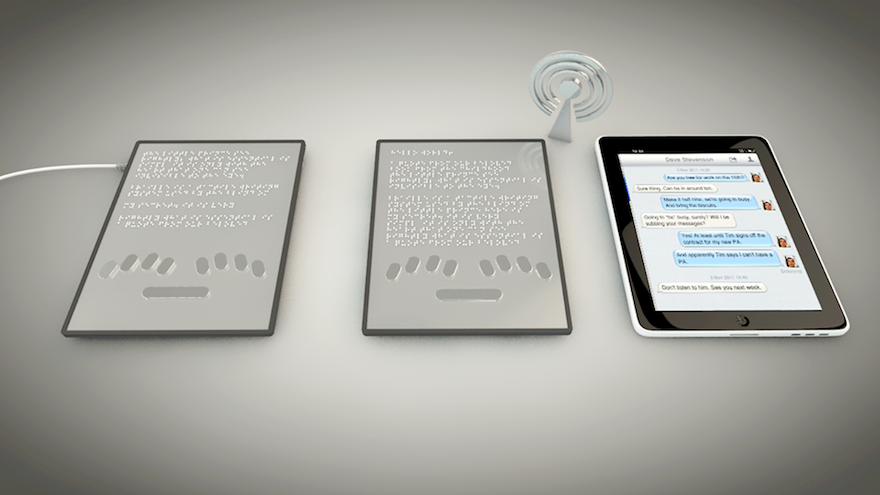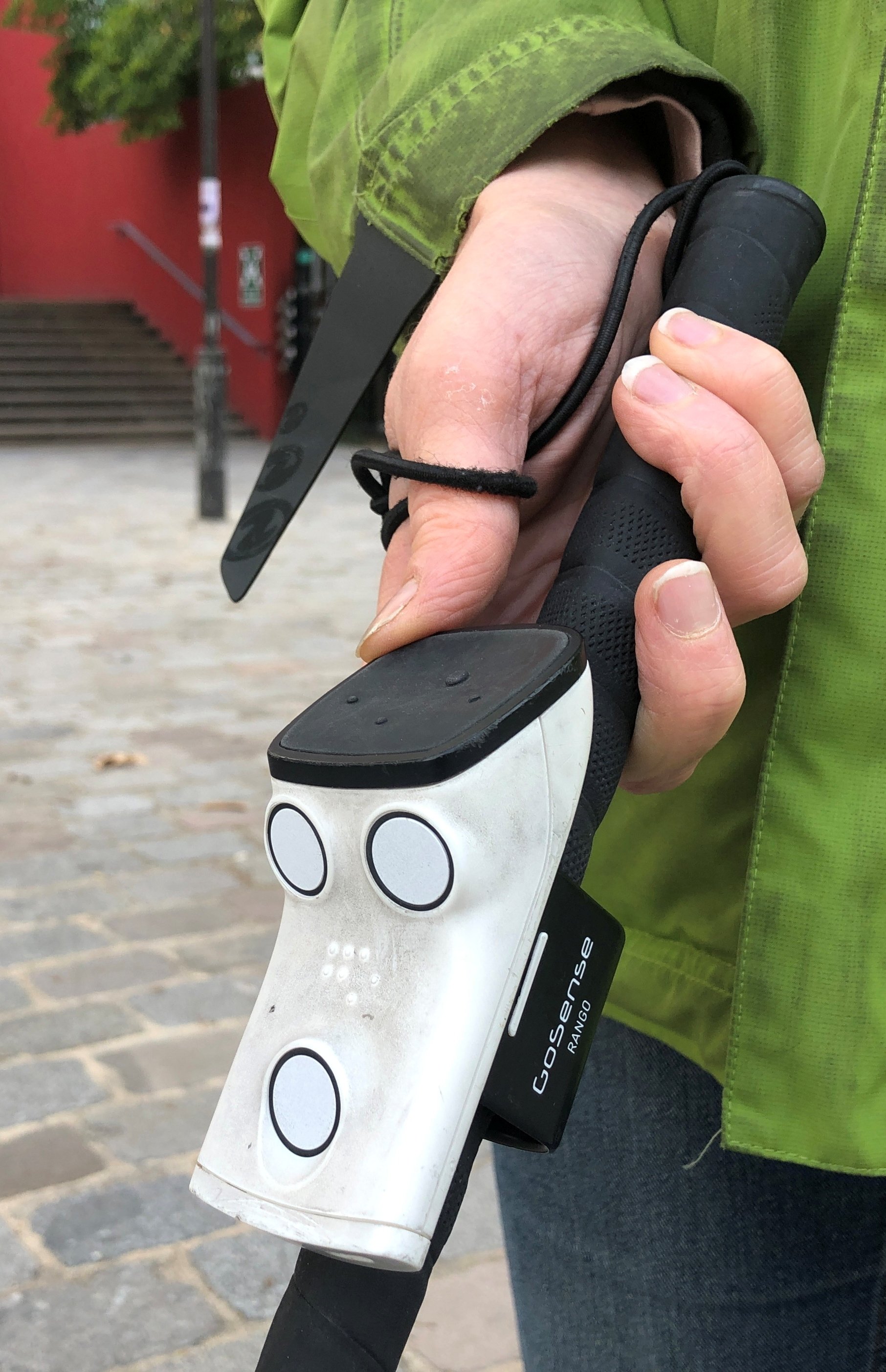AI-Powered Visual Aids: Redefining Support for the Blind
AI-Powered Visual Aids: Redefining Support for the Blind
Blog Article
Empowering Independence With Assistive Modern Technology for the Blind
The assimilation of assistive technology into the lives of individuals with visual impairments represents a significant development in advertising freedom and self-sufficiency. From ingenious screen readers to sophisticated clever canes, these tools not just improve everyday navigating and interaction however also equip individuals to involve meaningfully in numerous aspects of life. As we discover the myriad advantages and real-world applications of these innovations, it ends up being important to analyze the hidden aspects that contribute to their effectiveness and the possibility for future growths in this essential area.
Summary of Assistive Technology
The growth of assistive innovation is grounded in concepts of inclusivity and empowerment. Developments in software program, equipment, and sensory enhancements give customers with options tailored to their certain needs. From screen viewers that transform message to speech, to tactile gadgets that communicate info through touch, these tools transform the means people engage with their surroundings.
Along with useful applications, assistive technology promotes greater social inclusion and involvement in numerous fields, including education and work (Assistive technology for the blind). As research and advancement proceed to advance, the potential for assistive modern technology to better boost the lives of aesthetically impaired people continues to be appealing, paving the means for an extra equitable society where everybody can prosper
Kinds of Assistive Devices
A variety of assistive gadgets have actually arised to sustain individuals with aesthetic disabilities, each created to meet particular requirements and improve daily functioning. These gadgets range from low-tech options to modern advancements, giving diverse alternatives for users.
Low-tech tools include magnifiers and large-print materials that aid in reading and writing. Braille devices, such as Braille styluses and slates, allow responsive analysis and interaction. Alignment and flexibility aids, like white walking sticks, help customers browse their environment safely.
On the greater end of the range, electronic magnification systems and screen readers offer substantial support. Digital magnifiers enable customers to increase the size of text and images on screens, while screen readers convert electronic material into manufactured speech, facilitating access to details on computer systems and smartphones.
Smartphone applications likewise play a vital function, offering functions like text acknowledgment and navigating assistance. Wearable technology, such as smart glasses equipped with enhanced fact, is becoming an appealing device to improve situational understanding.
Benefits of Assistive Modern Technology
The integration of assistive innovation substantially boosts the top quality of life for people with aesthetic impairments. These modern technologies empower customers by promoting independence, allowing them to navigate their atmospheres better and carry out daily tasks with better ease. For example, display visitors and magnifying software application allow people to access electronic details, cultivating academic and specialist opportunities that might have previously been out of reach.
In addition, assistive devices such as smart canes and GPS applications offer real-time navigating help, boosting wheelchair and safety. This boosted freedom not just boosts self-confidence however additionally urges social involvement, allowing users to get involved even more totally in their neighborhoods.
Assistive modern technology also helps with communication, aiding customers attach with others through voice recognition and text-to-speech applications. This capacity is crucial for maintaining relationships and accessing vital info.
Furthermore, the personalization options available with many assistive modern technologies make certain that customers can tailor devices to their specific demands, better improving usability and effectiveness. Generally, the benefits of assistive innovation for individuals with visual impairments are profound, advertising an extra inclusive culture where everyone can pursue their objectives and ambitions.
Instance Studies and Success Stories
Highlighting the transformative effect of assistive modern technology, numerous instance studies highlight how individuals with visual disabilities have successfully incorporated these devices right into their day-to-day lives. One compelling instance involves an university student who utilized display reading software application to navigate online sources and scholastic products efficiently. This technology not just facilitated her education yet additionally enhanced her self-confidence in joining optical eyeglasses conversations and team tasks.
An additional study features a specialist that utilizes a mobile phone application designed for navigation and item recognition. By utilizing this app, he has gained back freedom in both his personal and work environments, allowing him to commute individually and engage with colleagues much more effectively.
Furthermore, a senior citizen shared her experience with braille e-readers, which enabled her to access a substantial array of literary works and stay gotten in touch with her area via publication clubs.
These success tales underscore the critical duty of assistive modern technology in fostering self-reliance, enhancing high quality of life, and promoting social integration for individuals with visual problems (Screen readers for the blind). By embracing these ingenious devices, users can get rid of obstacles and confiscate opportunities that add to their expert and personal fulfillment

Future Patterns in Assistive Innovation
Advancement in assistive technology is poised to redefine the landscape of support for individuals with aesthetic problems. Emerging trends highlight the combination of expert system (AI) and artificial intelligence, which boost the functionality of gadgets that aid with navigation and details access. As an example, visit this website AI-driven applications are currently efficient in analyzing aesthetic information in real-time, making it possible for individuals to engage with their environment much more individually.
Additionally, the growth of wearable innovation is progressing quickly. Smart glasses furnished with increased fact (AR) can supply audio descriptions of environments, transforming exactly how customers communicate with public spaces. These devices not only promote freedom but likewise foster social inclusion.
In Addition, the Web of Things (IoT) is making homes smarter, permitting for smooth connection in between assistive tools and day-to-day home appliances. This connection equips individuals by enabling voice-activated controls and automatic feedbacks tailored to specific requirements.
Verdict
Finally, assistive modern technology plays a crucial role in equipping people with aesthetic impairments by boosting their self-reliance and interaction with their environments. The diverse series of applications and devices offered not only promotes navigation and interaction however likewise promotes social assimilation and possibilities for individual and specialist growth. As developments continue in this field, the potential for boosting the quality of life for those with aesthetic disabilities will certainly expand, fostering greater freedom and empowerment.

Report this page